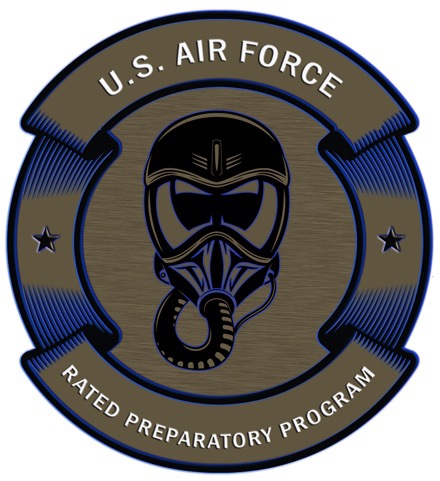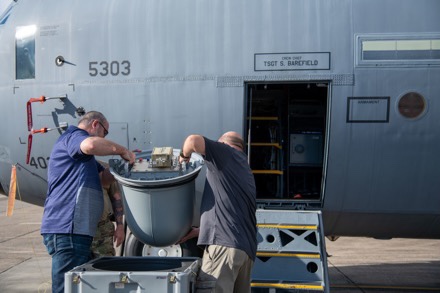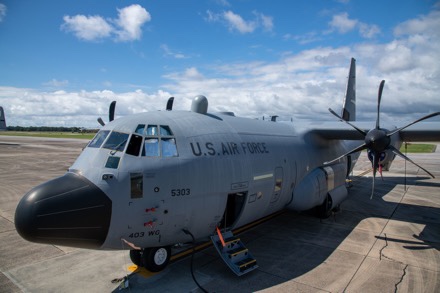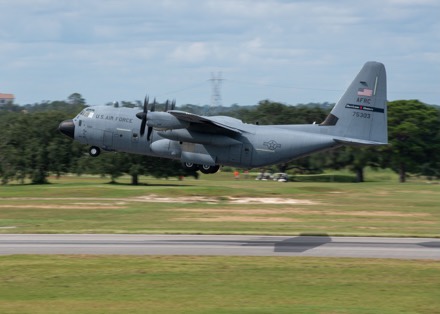JOINT BASE SAN ANTONIO-LACKLAND, Texas (AFNS) —
When it comes to equipping more than 38,000 security forces members across the Total Force, the Air Force Security Forces Center seeks to give Defenders every advantage over their adversaries. The AFSFC Logistics Directorate is charged with making sure it happens.
AFSFC, a primary subordinate unit of the Air Force Installation and Mission Support Center, relies on the directorate to acquire and deliver the latest, technically advanced personal gear and equipment to security forces members around the world, including those from the U.S. Space Force, Air National Guard and Air Force Reserve.
The directorate accomplishes the work with a staff of experts from various security forces and related functions, ranging from individual requirements and equipment to deployable equipment, weapons management and ground munitions.
“AFSFC’s deliberate strategic plan to modernize and standardize security forces’ equipment across the Total Force serves as a catalyst in achieving superior agility and lethality in a battlefield environment,” said Col. Aaron Guill, AFSFC commander. “Our logistics folks, with their knowledge and expertise, are one of the reasons we are successful.”
A recent initiative called the Model Defender Kit is one example of how the AFSFC team is modernizing the force.
“It’s a long-term initiative that standardizes the gear ensemble issued to every Defender across the security forces enterprise,” said Master Sgt. Derek Walton, individual equipment manager in the Logistics Directorate. “Our responsibility is to put an acquisition strategy in place once the testing and final solutions are made on the composition of the standardized gear ensemble.”
Replacing individual equipment with new technology involves stringent research, testing and evaluation processes. Walton and other members of the team manage the process from cradle to grave. After decisions are made, they purchase samples of equipment from various vendors and send them to several bases for testing and evaluation.
“Upgrading the 23 standard individual equipment items issued to every Defender takes time, but we’re committed and our efforts are producing positive results,” Walton said.
High-speed ballistic helmet
High-speed ballistic helmets are one such example. Now standard issue for security forces, the new high-cut helmets provide superior comfort and feature a built-in rail system to accommodate accessories such as night vision goggles and tactical communications equipment. More than 27,000 of the 28,934 helmets purchased by AFIMSC are already in the field. The remainder should arrive at units by late December.
Female body armor
In 2020, the AFSFC committed to a Total Force purchase of body armor developed specifically for women in security forces. The new armor is lighter and a better fit than previous body armor. It also improves mobility and provides better protection of the vital organs. The initial 7,688 vests were distributed across the Total Force.
Modular scalable vest
In 2021, AFSFC began testing and evaluating a new modular scalable vest at several bases. The latest tactical body armor features additional padding for the shoulders and hips, and a pouch designed to prevent armor plates from shifting. The vests can be configured for different levels of protection based on mission requirements. Today, security forces Airmen are equipped with more than 8,100 of the new vests.
Another branch of the Logistics Directorate, the Weapons and Munitions Division, is furthering AFSFC’s commitment to accelerate change by integrating and delivering innovative solutions that modernize security forces weapons and ground munitions systems. The division also supports and advocates for all user communities across the Air Force enterprise, not just security forces.
“Our unit validates and approves all requirements for weapons systems and munitions that enable Defenders across the Total Force to sustain a safe and secure operating environment,” said Randy Roth, Weapons and Munitions Division deputy chief.
The division has enhanced lethality by making significant contributions to several recent weapons modernization initiatives.
M18 modular handgun
AFSFC began shipping the M18 modular handgun systems to security forces units in early 2019. The M18 modular design and ergonomic features improve target acquisition and accuracy, outperforming the bulkier M9, which had been in use for more than 30 years. The M18 can also be customized with small, medium or large hand grips. AFSFC managed the purchase of 48,860 and fielding of 38,708 M18s.
M4A1 carbine rifle
Another recent acquisition is the fully automatic M4A1 carbine rifle, an upgrade to the semi automatic M4, which fires only a three-round burst. Defenders are currently transitioning to the new weapon. For security forces, the M4A1 will be equipped with the direct view optic that magnifies at a 1:6 ratio.
“It’s going to increase defender lethality by improving observation, identification and target accuracy,” Roth said. AFSFC managed the purchase of 50,000 DVOs and will begin shipping them to units in the first quarter of 2022.
M110A1 squad designated marksman rifle
The M110A1 is replacing the M24 precision rifle, which has been in use since security forces established the close precision engagement program 20 years ago. The new weapon comes with the same scope as the M4A1 and has a bullet drop compensator for 7.62 mm ammunition. It will be fitted with a 3:24 magnification optic that increases maximum effective range and enhances surveillance. The system also has military standard rails to allow attachment of accessories, such as a clip-on night sight. That was not an option with the M24. The M110A1 provides semi-automatic fire to increase engagement speed when encountering multiple targets. AFSFC managed the purchase of 1,464 M110A1s. Deliveries to units will start in the first quarter of 2022.
Polymer cased 50-caliber round
The Center is also replacing 50-caliber rounds with heavier brass shells with a polymer-based alternative. “Just recently approved by the Nonnuclear Munitions Board, the new light-weight polymer-based shell casings are ideal for agile Helo rescue units,” Roth said. “We predict these rounds will eventually get into the hands of our ground-based units and Defenders.”
“At Security Forces Center, we strive to find the best solutions to efficiently procure and deliver the latest technology across the Total Force,” said Bryan Gillespie, AFSFC director of logistics. “Above all, we want Defenders to know we are here for them and encourage Defenders and commanders alike to reach out when they have questions and concerns, or are in need of logistics support and sustainment.”
By Joe Bela, Air Force Installation and Mission Support Center Public Affairs























































































































